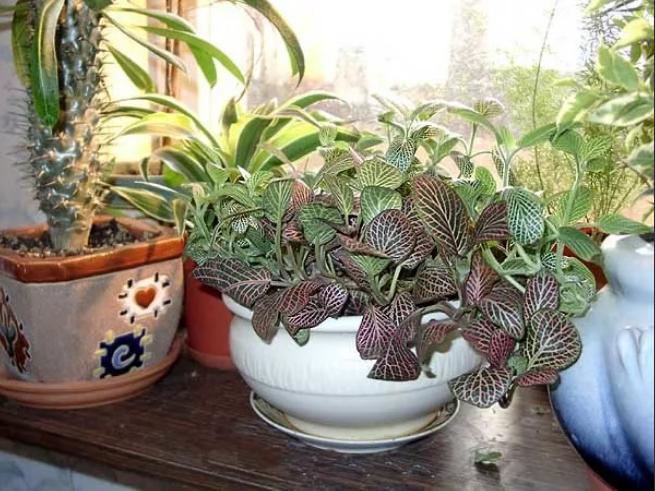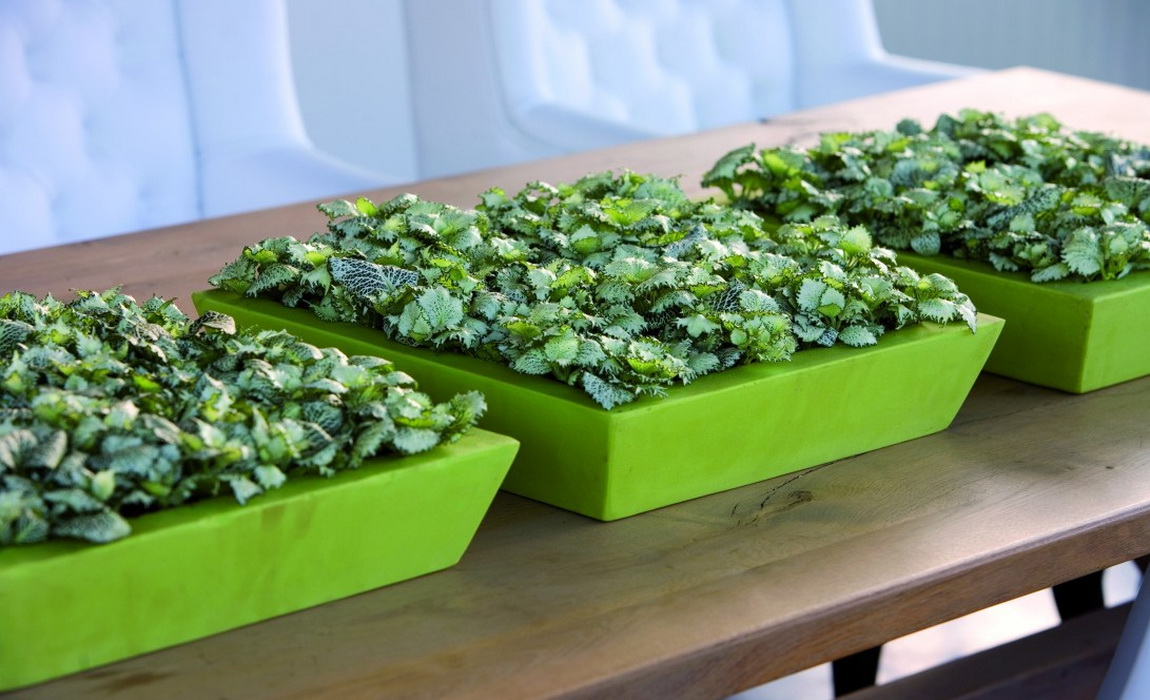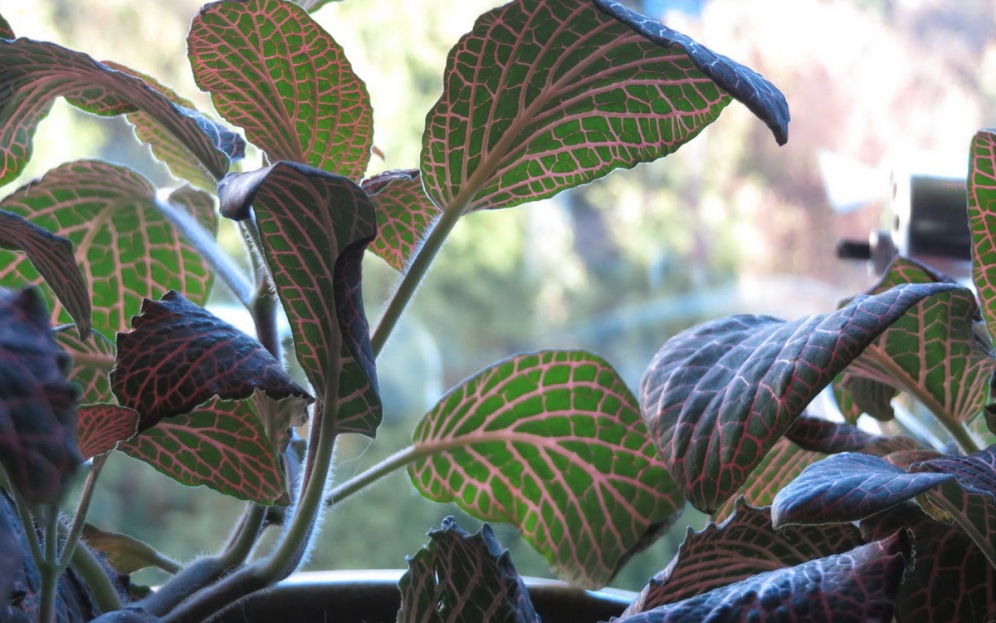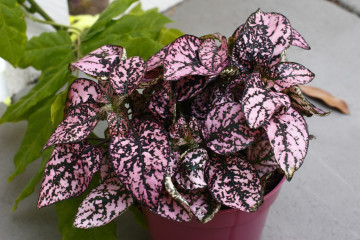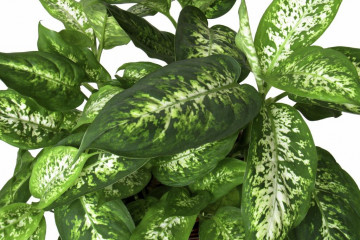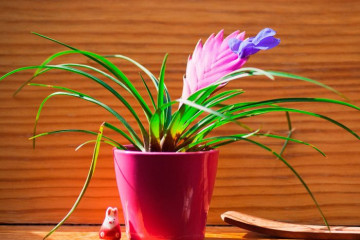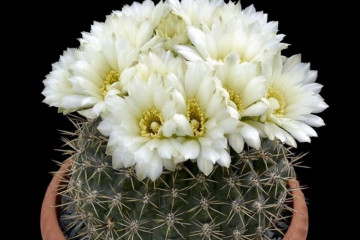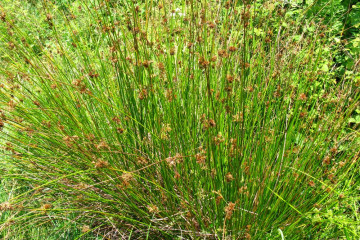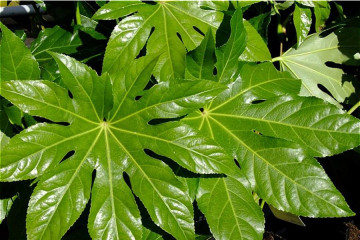Fittonia mix - home care
Content:
Fittonia Mix is an exotic plant. It is often grown on the windowsills of apartments, private houses and offices. The popularity of the flower was brought by beautiful veins on the foliage. To get a highly decorative plant, it is worth considering in more detail how to care for Fittonia at home.
What does fittonia look like, flower varieties
Mix fittonia bushes of small height, its stems beautifully spread over the soil. The length of the leaf can be from 2 to 16 cm. The leaves are colored green, sometimes with a purple tint. Veins are clearly visible on the plates.
Common varieties
The most common variety of Fittonia Mix is Belozhilkovaya. Other popular plant varieties:
- Vershaffelt - the shoots of the plant curl, they are covered with fluff. Over time, their silvery color changes to olive. The leaves of this variety are decorated with red veins.
- Silver - a relatively new hybrid, the length of the leaf is only 2.5 cm. At this size of the plate, the white pattern seems even more attractive.
- White Anna - the distinctive feature of the variety is a white pattern on the foliage, along the edges of which there is a dark edging.
Picture 2 Grade White Anna
How to care for Fittonia at home
Subject to the cultivation technique, you can get a highly decorative plant.
Temperature
In summer, Fittonia prefers a temperature of +24 degrees, and in winter, +20 is enough for it. Lower temperatures in winter will lead to plant disease. Due to the presence of drafts or sudden changes in temperature, foliage can fly around the Fittonia.
Lighting
Indoor growing of Fittonia requires a lot of bright light. South windows will not work for the plant, but if there are no other options, the pot should be placed deep into the room to protect the foliage from direct sunlight. West and east windows will work best. On the north side, the flower will not die, but a lack of light will lead to a decrease in the decorativeness of its foliage. When daylight hours are shortened, it is important to use fluorescent lights to illuminate the fittonia.
Watering
When watering fittonia, you need to ensure that the earthy clod does not dry out, otherwise the plant will remain without foliage. Stagnation of water in a pot is also harmful, because it causes rotting of the root system. In summer, watering is carried out as soon as the ground is dry on top, and in winter - 2-3 days after the top layer of the soil dries up. Humidification is carried out only with settled warm water.
Spraying
Systematic spraying of foliage for this plant is simply necessary, otherwise the plates will begin to dry, fade and lose their decorative effect. Spraying is carried out once a day, and if possible - in the morning and in the evening.
Humidity
Low air humidity leads to various diseases of Fittonia, in addition, pests may appear.To increase the humidity, you can put a tray with water and pebbles poured into it, and place a pot with a flower on top.
Priming
The soil for fittonia should be loose, well-permeable, but nutritious. A soil mixture of peat, sand, turf and coniferous soil is perfect.
Top dressing
The culture requires year-round feeding. But too much nutrient content will negatively affect the development of the plant. The manufacturer's packaging usually indicates the required dosage, but it is better to take half of the indicated volume. Complex mineral fertilizers are ideal.
Pruning
To make the branching of the plant beautiful, and the bush itself turned out to be lush, you need to pinch the tops of the stems. This procedure should be done regularly. In the process of growth, the lower part of the fittonia is exposed, in this case the plant loses its decorative effect. Rejuvenation can be achieved by pruning at the end of March. It is not recommended to cut off all the foliage at a time, as the growth of young shoots will be extremely slow. Pruning is best done in several steps.
Fittonia: reproduction
It is recommended to propagate the flower every year at the time of transplantation, if necessary. Possible breeding methods:
- cuttings;
- dividing the bush;
- the use of air layers.
Rooting cuttings
From the top of the bush, you need to cut off part of the stem, on which several leaves remain. For rooting to take place quickly, the stalk should be no longer than 8 cm. The cut off part of the flower is placed in the sand. Cover the top with a jar. The roots will appear in a month.
Air layering
The plant reproduces by layers on its own, but if you don't want to wait, then you can help the flower. A shoot without foliage must be pressed to the soil and dug a little. After a while, roots will appear in this place. The shoot is cut and planted in a separate container.
Dividing the bush
When transplanting, the bush is divided into several parts, and then the resulting plants are planted in different pots. The procedure is carried out carefully so as not to injure the delicate roots of the plant.
Transfer
The bush grows quite quickly, so at a young age it needs to be replanted annually. As the fittonia grows, transplants are carried out less often - 1 procedure in 3 years will be enough. Fittonia mix in a pot should feel spacious. The transplant is carried out by the transshipment method without cleaning the root system from soil.
Possible growing problems and diseases
Despite the high resistance of Fittonia to diseases and pests, problems may arise if agrotechnical rules are not followed.
The flower sheds buds and leaves
This is how Fittonia reports that it lacks light and moisture. The plant may not be getting enough micronutrients. It is necessary to rearrange the pot to a more lighted place and revise the watering schedule.
Leaves turn pale
This sign appears when moisture stagnates in the soil. The volume and number of irrigations should be reduced.
The tips of the leaves dry
This is due to a lack of nutrients or oversaturation of the soil with fertilizers. It is worth revising the feeding scheme.
The lower leaves fall
This process is natural, you don't need to do anything. As it grows, the stem becomes bare, but you can rejuvenate the flower to increase its decorative effect.
Pests
Fittonia is often attacked by insects:
- aphid;
- shield;
- thrips;
- spider mites;
- mealybugs.
To combat pests, a soap solution is used, and in more advanced cases, chemicals cannot be dispensed with.
Signs and superstitions
All signs associated with Fittonia are positive.The plant helps to improve the atmosphere in the home and smooth out any conflicts that arise. With it, you can reduce the number of fights in the house and increase the frequency of visiting guests. Fittonia promotes friendship and love. The negative energy in the house is completely absorbed.
Fittonia mix and caring for it at home will not cause much trouble even for a novice florist. To get an ornamental and healthy plant, you need to carry out elementary agrotechnical work in a timely manner.

